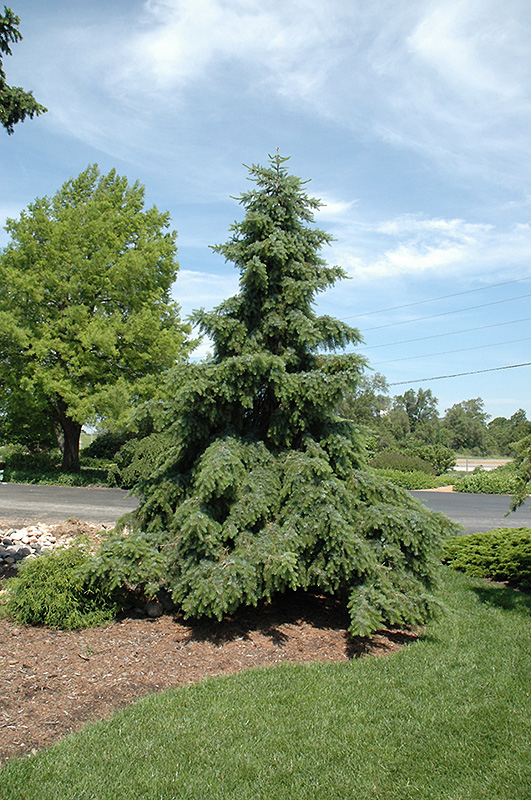>> Home
Weeping Serbian Spruce
Picea omorika 'Pendula'
Height: 30 feet
Spread: 15 feet
Sunlight:
![]()
Hardiness Zone: 4
Description:
A wonderfully artistic spruce tree with gracefully pendulous branches hanging off a single central leader that arches skyward, making for a very narrow, almost spire-like form; best used as a bold solitary accent in a landscape composition
Ornamental Features
Weeping Serbian Spruce is primarily valued in the landscape for its highly ornamental weeping form. It has attractive dark green foliage with silver undersides which emerges light green in spring. The needles are highly ornamental and remain dark green throughout the winter. The smooth brick red bark adds an interesting dimension to the landscape.
Landscape Attributes
Weeping Serbian Spruce is an evergreen tree with a strong central leader and a rounded form and gracefully weeping branches. Its relatively fine texture sets it apart from other landscape plants with less refined foliage.
This is a relatively low maintenance tree. When pruning is necessary, it is recommended to only trim back the new growth of the current season, other than to remove any dieback. It has no significant negative characteristics.
Weeping Serbian Spruce is recommended for the following landscape applications;
- Accent
- Vertical Accent
Planting & Growing
Weeping Serbian Spruce will grow to be about 30 feet tall at maturity, with a spread of 15 feet. It has a low canopy, and should not be planted underneath power lines. It grows at a slow rate, and under ideal conditions can be expected to live for 80 years or more.
This tree should only be grown in full sunlight. It does best in average to evenly moist conditions, but will not tolerate standing water. It may require supplemental watering during periods of drought or extended heat. It is not particular as to soil type or pH. It is quite intolerant of urban pollution, therefore inner city or urban streetside plantings are best avoided, and will benefit from being planted in a relatively sheltered location. This is a selected variety of a species not originally from North America.
